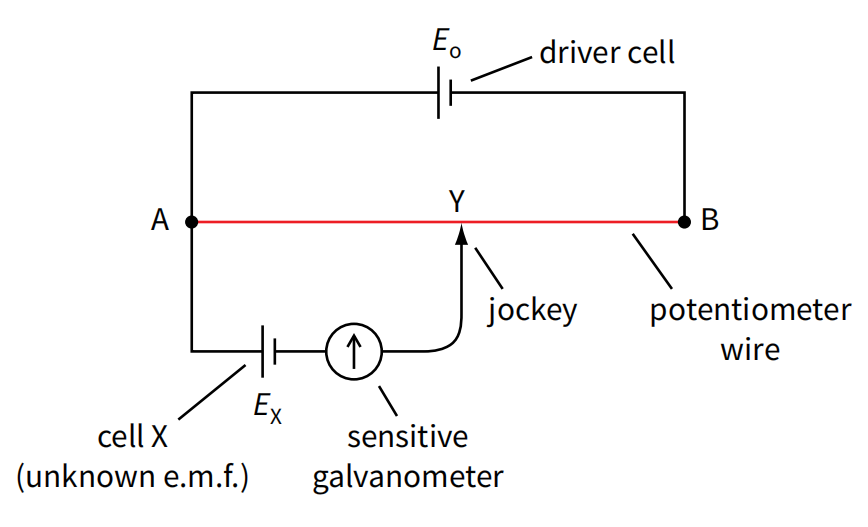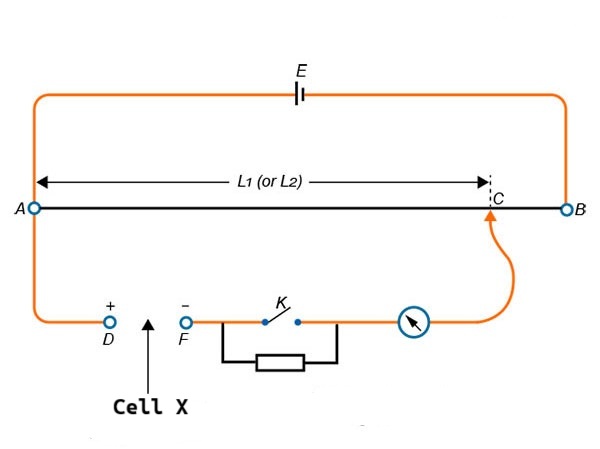Components of an emf potentiometer
- Driver Cell: A cell with a known and stable emf that provides the main voltage supply to the circuit.
- Test Cell: The cell whose emf (\(E_{x}\)) is to be measured. The cell must have a lower voltage than the driver cell.
- Potentiometer Wire: A uniform resistance wire, stretched between two points (A and B). This wire acts as a uniform potential divider, meaning the voltage drops steadily along its length.
- Jockey: A metal contact with a sharp edge that can be moved along the potentiometer wire to make contact at different points.
- Sensitive Galvanometer: A device used to detect very small currents. It is used to indicate when the potentiometer circuit is balanced.

